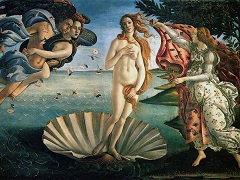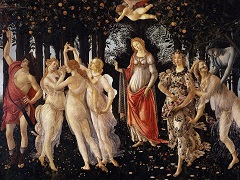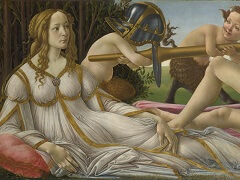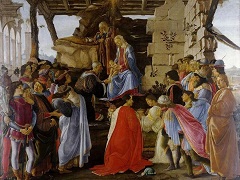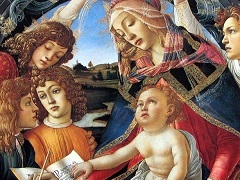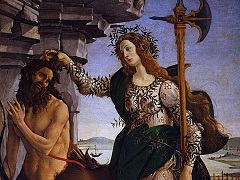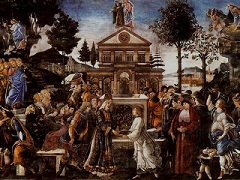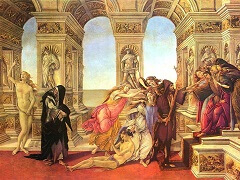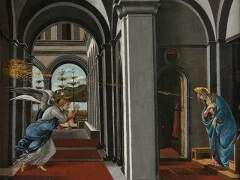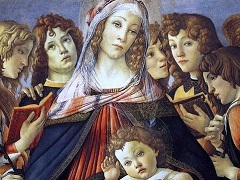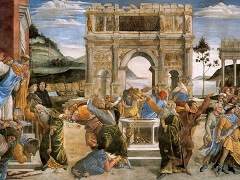Cestello Annunciation, 1490 by Sandro Botticelli
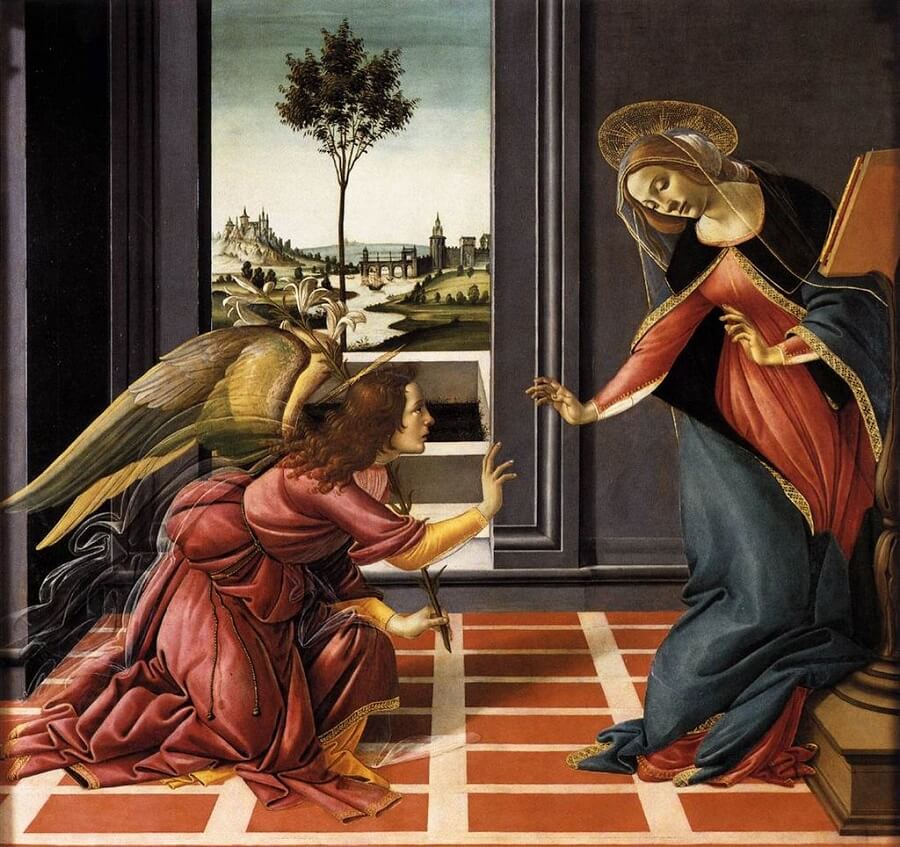
The hands of the angel and Mary constitute the central point of Cestello Annunciation. Mary's left hand is reaching out towards the right hand of the angel, while the latter remains as if at an unbridgeable distance. The fascination of this interaction between the two hands lies in the very fact of their striving to touch each other but being held back as if under a magic spell. However, their great attractive force can be attributed to the fact that the localization of the hands in the picture is in accordance with the rules of the Golden Section, the division of lines and areas according to certain ratios, which had been common knowledge since antiquity and was regarded as particularly harmonious. The positions of the hands function in a fascinating manner as the linking agent between the two halves of the picture, which are strictly divided by the vertical lines of the doorway. Mary's slightly lowered hand encounters the horizontal line of composition which predominates in the angel, while the angel's raised hand underlines Mary's standing pose. At the same time, the angel's hand epitomizes the unbridgeable distance between the two parts of the picture, each of which is the realm of one of the figures: his hand is located precisely at the edge of the door jamb, the vertical line of which delineates a clear distinction between Mary and the angel. This division of the two halves of the picture is emphasized by their differing layouts. Thus it is that a broad landscape opens out behind the angel, whereas Mary for her part remains surrounded by walls, symbolizing her purity. This connection between exterior and interior, on the one hand, and the location in the picture of the angel and Mary respectively, on the other, is in accordance with a tradition known to have been in existence since the Middle Ages.
Theological writings of the 15th century divided the Annunciation into different, successive mental states, representative of the different reactions on the part of the Virgin to the heavenly message. These began with the conturbatio of Mary, her agitation, followed by the Virgin's reflection, her enquiry, and her submission. In their pictures of the Annunciation, the painters of this period revealed themselves to be influenced by this analysis, as is visible in Botticelli's apparent recording in his pictorial composition of the first stage, Mary's agitation. The portrayal of an agitated Mary did not appeal to every painter, such as The Annunciation - by Leonardo Da Vinci.

